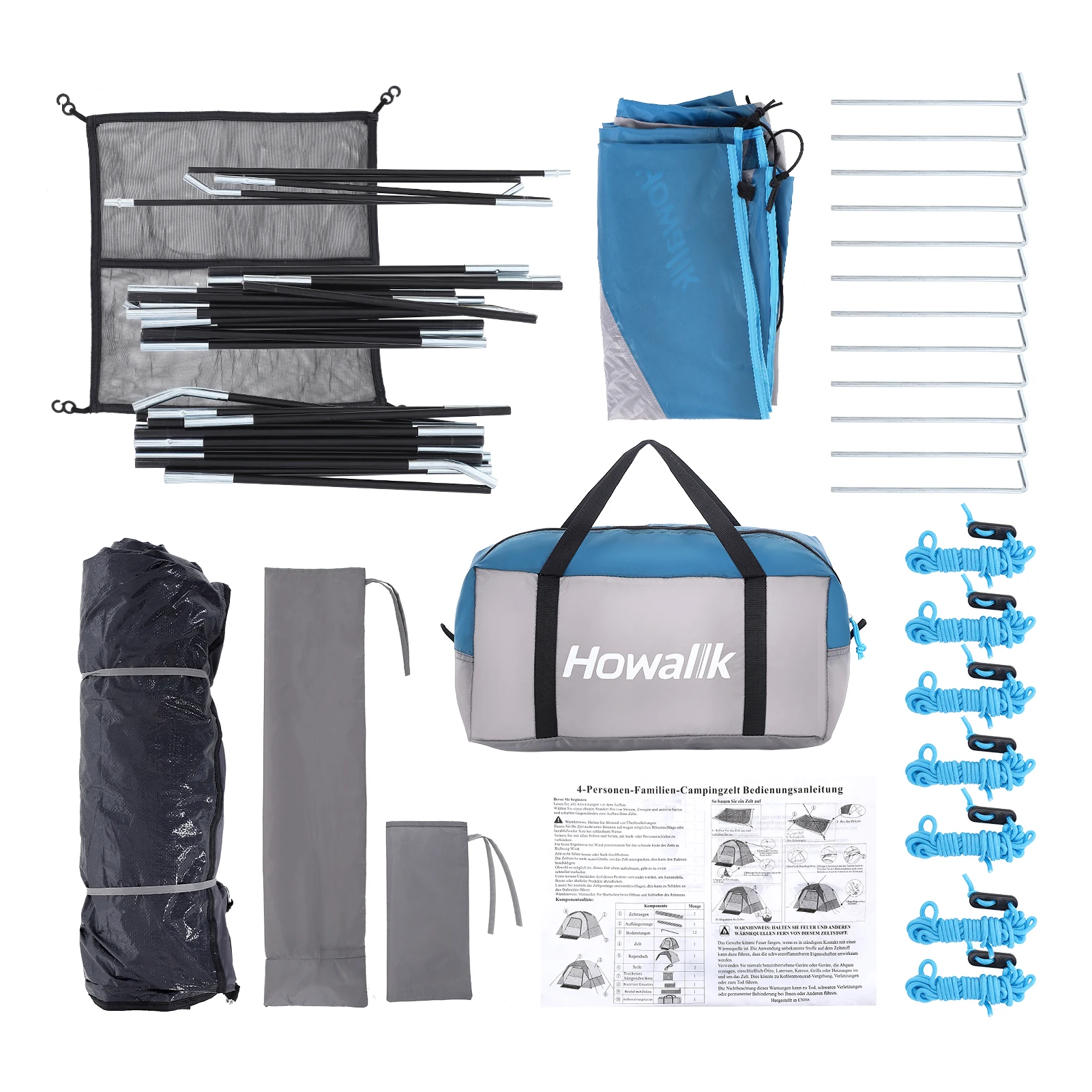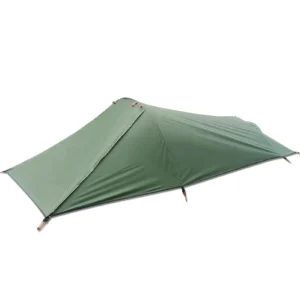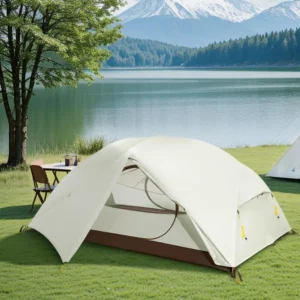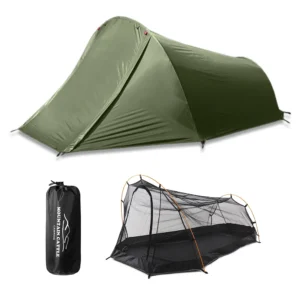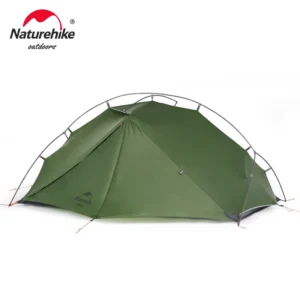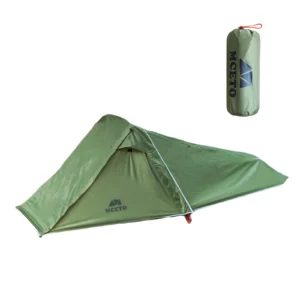Introduction: The Freedom of Carrying Less on the Trail
When you’re miles deep on a backcountry trail, every ounce in your backpack matters. Lightweight tents—generally defined as under 3 pounds (1.4 kg) for one-person shelters and under 4 pounds (1.8 kg) for two-person options—can transform your outdoor experience by significantly reducing pack weight. The difference between carrying a traditional 5-pound tent and a 2-pound ultralight shelter is comparable to removing three liters of water from your pack—a change you’ll appreciate with every step.
At Explore Elements, we’ve dedicated hundreds of trail miles to testing today’s leading lightweight shelters across diverse environments—from the arid deserts of the southwest to the rainy alpine zones of mountain ranges. Our testing spans multiple seasons, challenging weather conditions, and various terrain types to ensure our recommendations stand up to real-world use.
We evaluate each tent based on four key criteria: weight-to-space ratio (how much livable area you get for the weight), durability (because ultralight means nothing if it fails mid-trip), weather protection (keeping you dry and secure), and overall value (because lightweight often means premium pricing).
Understanding different shelter options for two campers can dramatically impact your hiking experience. This guide breaks down our top picks with a comprehensive comparison table, detailed reviews of each model, and a thorough buying guide to help you select the perfect lightweight tent for your specific needs.
The impact of tent weight extends far beyond just numbers on a scale. Reducing your shelter weight creates a cascading effect that enhances your hiking performance on long treks through improved energy levels, reduced fatigue, and greater daily mileage potential.
Essential Lightweight Tent Comparison Table
The table below provides a side-by-side comparison of our top lightweight tent picks, allowing you to quickly evaluate key specifications. We’ve included the most critical metrics that impact performance and comfort, from trail weight to interior dimensions.
Understanding the differences between ultralight and lightweight tents helps clarify the significant design and material variations that impact performance, durability, and price across different shelter categories. Each option represents a different balance of weight savings versus features, with prices indicated by $ symbols rather than specific dollar amounts to account for market fluctuations.
| Model | Capacity | Min Trail Weight | Packed Weight | Packed Size | Floor Area | Peak Height | Best For |
|---|---|---|---|---|---|---|---|
| Best Overall | 2P | 2 lbs 8 oz (1.1 kg) | 2 lbs 14 oz (1.3 kg) | 18 x 6 in (46 x 15 cm) | 29 sq ft (2.7 sq m) | 40 in (102 cm) | All-around use |
| Best Ultralight | 1P | 1 lb 6 oz (0.6 kg) | 1 lb 10 oz (0.7 kg) | 16 x 5 in (41 x 13 cm) | 21 sq ft (1.9 sq m) | 38 in (97 cm) | Thru-hiking |
| Best Value | 2P | 3 lbs 2 oz (1.4 kg) | 3 lbs 8 oz (1.6 kg) | 19 x 7 in (48 x 18 cm) | 31 sq ft (2.9 sq m) | 42 in (107 cm) | Budget backpacking |
| Best Freestanding | 2P | 2 lbs 15 oz (1.3 kg) | 3 lbs 4 oz (1.5 kg) | 18 x 7 in (46 x 18 cm) | 30 sq ft (2.8 sq m) | 41 in (104 cm) | Versatile terrain |
| Best Semi-Freestanding | 2P | 2 lbs 10 oz (1.2 kg) | 3 lbs (1.4 kg) | 18 x 6 in (46 x 15 cm) | 29 sq ft (2.7 sq m) | 40 in (102 cm) | Mixed terrain |
| Best Trekking Pole | 1P | 1 lb 3 oz (0.5 kg) | 1 lb 5 oz (0.6 kg) | 14 x 5 in (35 x 13 cm) | 20 sq ft (1.9 sq m) | 47 in (119 cm) | Ultralight backpacking |
| Best for Harsh Weather | 2P | 3 lbs 6 oz (1.5 kg) | 3 lbs 12 oz (1.7 kg) | 19 x 7 in (48 x 18 cm) | 28 sq ft (2.6 sq m) | 39 in (99 cm) | Alpine conditions |
| Best for Tall Users | 1P | 2 lbs 6 oz (1.1 kg) | 2 lbs 10 oz (1.2 kg) | 18 x 6 in (46 x 15 cm) | 23 sq ft (2.1 sq m) | 43 in (109 cm) | Taller backpackers |
| Best for Couples | 2P | 3 lbs (1.4 kg) | 3 lbs 6 oz (1.5 kg) | 19 x 7 in (48 x 18 cm) | 32 sq ft (3.0 sq m) | 42 in (107 cm) | Couples/partners |
| Best Minimalist | 1P | 15 oz (0.4 kg) | 1 lb 1 oz (0.5 kg) | 12 x 4 in (30 x 10 cm) | 18 sq ft (1.7 sq m) | 42 in (107 cm) | Ultralight specialists |
Best Overall Lightweight Tent: Big Agnes Copper Spur HV UL2
Key Specifications:
– Weight: 2 lbs 8 oz (1.1 kg) trail weight
– Floor Area: 29 sq ft (2.7 sq m)
– Peak Height: 40 inches (102 cm)
– Packed Size: 18 x 6 inches (46 x 15 cm)
– Doors/Vestibules: 2
Pros:
– Outstanding weight-to-space ratio
– Excellent balance of durability and weight
– Two doors and vestibules provide convenient access
– Near-vertical walls maximize usable space
– Pre-bent poles create more headroom
– Quick and intuitive setup
– Impressive weather resistance
Cons:
– Premium price point
– Requires careful site selection to prevent floor damage
– Stakes could be more durable
– Rainfly can be tricky to tension perfectly
– Not ideal for extreme winter conditions
The Big Agnes Copper Spur HV UL2 stands out as our best overall lightweight tent by mastering the delicate balance between weight savings and livability. Unlike many ultralight shelters that sacrifice comfort for reduced weight, this tent provides nearly 30 square feet of floor space while keeping trail weight just over 2.5 pounds.
The intelligent pole configuration with pre-bent corners creates near-vertical walls that maximize usable interior volume—a feature especially noticeable when sitting up or changing clothes inside. During our testing in Colorado’s unpredictable mountain weather, the tent remained stable in winds up to 30 mph and kept occupants completely dry through heavy overnight thunderstorms.
The dual-door design eliminates the awkward climb-over dance common in lightweight tents, while the two vestibules provide ample space for gear storage. We found the setup process remarkably intuitive, taking under 5 minutes even after long hiking days. Our ultralight backpacking tent collection features several excellent options, but this model’s balance of weight, space, and durability makes it our top recommendation for most backpackers.
Best Ultralight Tent for Thru-Hiking: Zpacks Plex Solo
Key Specifications:
– Weight: 1 lb 6 oz (0.6 kg) trail weight
– Floor Area: 21 sq ft (1.9 sq m)
– Peak Height: 38 inches (97 cm)
– Packed Size: 16 x 5 inches (41 x 13 cm)
– Doors/Vestibules: 1
Pros:
– Incredibly lightweight at under 1.5 pounds
– Dyneema Composite Fabric is fully waterproof
– No stretch when wet unlike silnylon options
– Remarkable durability-to-weight ratio
– Generous headroom at center
– Compact packed size
– Simple setup with trekking poles
Cons:
– Very expensive
– Condensation management requires attention
– Less forgiving setup process
– Limited interior space compared to heavier options
– Single door design
For dedicated thru-hikers and ultralight enthusiasts, the Zpacks Plex Solo represents the pinnacle of weight reduction without sacrificing essential protection. At just 1 pound 6 ounces of trail weight, this shelter shaves crucial ounces while maintaining surprising durability through its Dyneema Composite Fabric construction.
Our testing on the Pacific Crest Trail revealed this tent’s exceptional ability to withstand constant use. After 500+ miles of testing, the shelter showed minimal signs of wear despite nightly setup and takedown. The waterproofing performance particularly impressed us—during an unexpected Sierra storm, the Dyneema fabric remained completely waterproof without the stretching and sagging common to silnylon shelters.
Setup requires some practice using your trekking poles, but once mastered, can be completed in under 3 minutes. While interior space is naturally limited compared to heavier options, the 38-inch peak height allows most users to sit upright comfortably. The trekking pole tents for minimizing pack weight provide significant advantages for long-distance hikers where every ounce matters over thousands of miles.
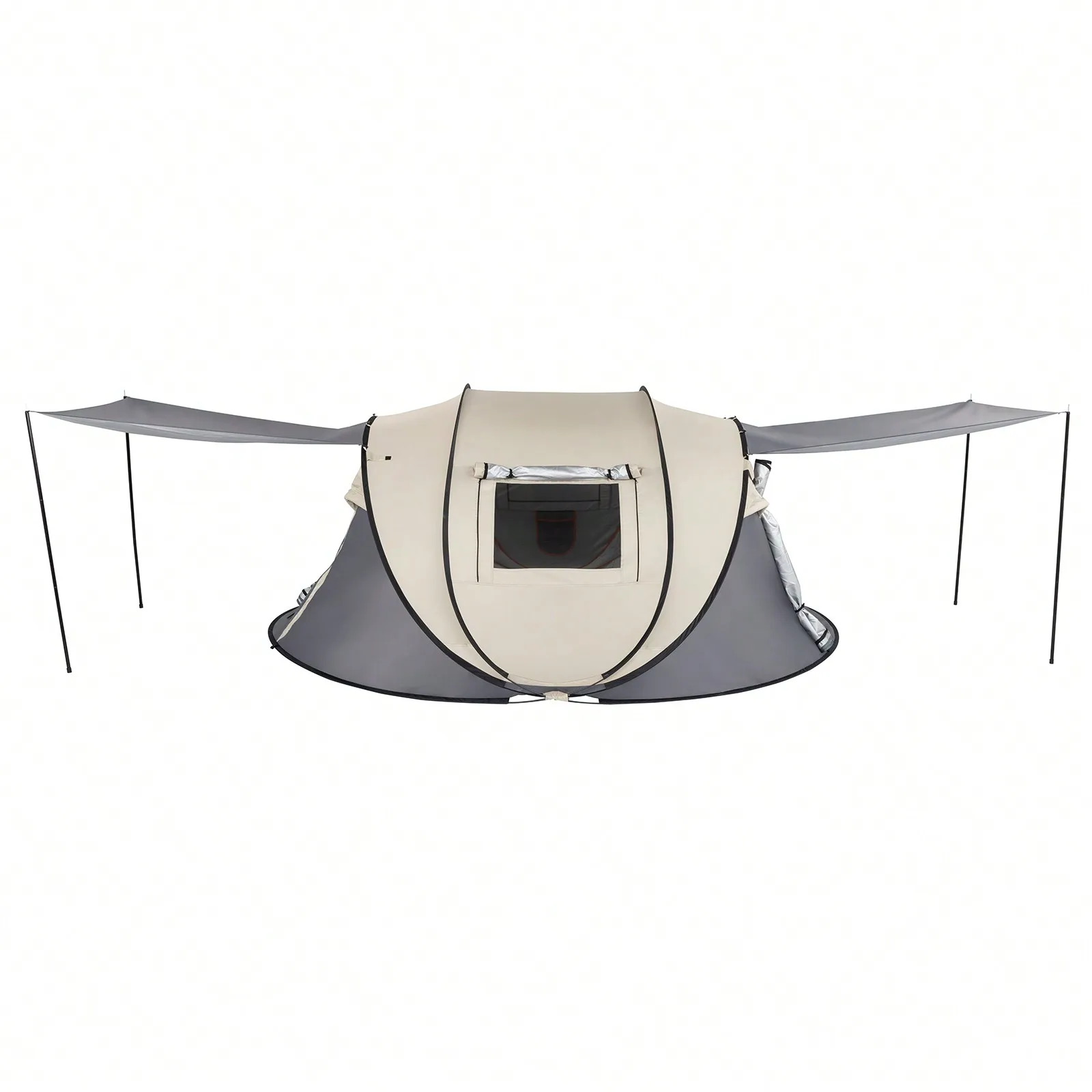
Best Value Lightweight Tent: REI Co-op Quarter Dome SL 2
Key Specifications:
– Weight: 3 lbs 2 oz (1.4 kg) trail weight
– Floor Area: 31 sq ft (2.9 sq m)
– Peak Height: 42 inches (107 cm)
– Packed Size: 19 x 7 inches (48 x 18 cm)
– Doors/Vestibules: 2
Pros:
– Exceptional value for the features
– Spacious interior for the weight class
– Two doors and vestibules
– Good ventilation system reduces condensation
– Respectable weather resistance
– Includes footprint unlike many competitors
– Durable materials compared to ultralight options
Cons:
– Heavier than premium ultralight options
– Setup requires more time and attention
– Less packable than more expensive models
– Limited color options
– Rainfly coverage could be more comprehensive
The REI Co-op Quarter Dome SL 2 demonstrates that lightweight backpacking doesn’t require spending a small fortune. This tent delivers impressive performance at a significantly lower price point than most competitors in the lightweight category.
Despite costing 30-40% less than premium ultralight models, the Quarter Dome offers comparable livability with its 31 square feet of floor space and 42-inch peak height. During our testing in Olympic National Park’s rainforests, we found the tent’s weather protection surprisingly capable, keeping occupants dry through persistent drizzle and moderate wind.
The included footprint adds significant value and addresses durability concerns common to lightweight shelters. While it doesn’t match the absolute lightest options in our lineup, the weight penalty is reasonable considering the cost savings and enhanced durability. The lightweight backpacking tents at various price points represent different value propositions, but this model offers the best balance of performance and affordability.
Best Freestanding Lightweight Tent: MSR Hubba Hubba NX 2
Key Specifications:
– Weight: 2 lbs 15 oz (1.3 kg) trail weight
– Floor Area: 30 sq ft (2.8 sq m)
– Peak Height: 41 inches (104 cm)
– Packed Size: 18 x 7 inches (46 x 18 cm)
– Doors/Vestibules: 2
Pros:
– Truly freestanding design works on any surface
– Quick, intuitive setup with hub-based pole structure
– Excellent stability in wind and rain
– Two symmetrical doors and vestibules
– Superior ventilation design
– Durable floor material
– Versatile across all terrain types
Cons:
– Slightly heavier than semi-freestanding options
– Premium price point
– Rainfly requires proper tensioning
– Color options limited
– Included stakes could be better
The MSR Hubba Hubba NX 2 proves that a truly freestanding lightweight tent doesn’t have to be a contradiction in terms. Unlike many so-called “freestanding” tents that still require staking for full functionality, this model delivers complete structural integrity without a single stake—perfect for rocky terrain, wooden platforms, or desert conditions where stakes struggle to hold.
The innovative pole hub system creates a stable structure in under 3 minutes, with color-coded corners eliminating setup confusion. During our testing on exposed rocky outcrops in the White Mountains, where securing stakes was nearly impossible, the Hubba Hubba remained rock-solid even in gusty conditions.
Interior space utilization is exceptional, with near-vertical walls that make the 30-square-foot floor area feel substantially larger. The symmetrical design means equal space for both occupants—no more fighting over the “good side” of the tent. Our collection of freestanding tents that balance self-support and weight showcases how clever engineering can minimize weight penalties while maximizing convenience.
Best Semi-Freestanding Lightweight Tent: Nemo Dragonfly 2
Key Specifications:
– Weight: 2 lbs 10 oz (1.2 kg) trail weight
– Floor Area: 29 sq ft (2.7 sq m)
– Peak Height: 40 inches (102 cm)
– Packed Size: 18 x 6 inches (46 x 15 cm)
– Doors/Vestibules: 2
Pros:
– Excellent weight-to-space ratio
– Simplified setup with pre-bent poles
– Generous headroom throughout
– Two large doors and vestibules
– Superior ventilation system
– White interior canopy enhances perceived space
– Color-coded setup components
Cons:
– Requires corner staking for full setup
– Thin floor material needs careful site selection
– Premium price point
– Vestibule zippers can catch
– Limited winter weather performance
The Nemo Dragonfly 2 embodies the sweet spot between freestanding convenience and weight savings through its semi-freestanding design. By requiring stakes only at the foot end, it saves several ounces while maintaining most of the setup convenience that backpackers prize.
Our testing revealed that the innovative pole architecture creates an impressive amount of livable space for the weight. The pre-bent poles push the walls outward, creating vertical sidewalls that dramatically increase usable interior volume. During setup timing tests, we found experienced users could have the shelter fully pitched in just over 3 minutes, while even first-time users managed under 6 minutes.
The dual large doors and vestibules provide convenient entry/exit and gear storage that rivals much heavier models. Mastering the setup of a lightweight tent can take some practice with semi-freestanding designs, but the slight learning curve pays dividends in weight savings and performance.
Best Trekking Pole Tent for Ultralight Backpacking: Tarptent ProTrail Li
Key Specifications:
– Weight: 1 lb 3 oz (0.5 kg) trail weight
– Floor Area: 20 sq ft (1.9 sq m)
– Peak Height: 47 inches (119 cm)
– Packed Size: 14 x 5 inches (35 x 13 cm)
– Doors/Vestibules: 1
Pros:
– Exceptionally lightweight design
– Dyneema construction provides durability and waterproofing
– No-stretch performance when wet
– Impressive interior height
– Quick setup once learned
– Outstanding storm performance
– Excellent ventilation system
Cons:
– Expensive due to Dyneema materials
– Requires trekking poles (not included)
– Steeper learning curve for setup
– Limited interior width
– Single entry point
Eliminating dedicated tent poles creates one of the most dramatic weight reductions possible in shelter design. The Tarptent ProTrail Li harnesses your existing trekking poles to create a remarkably lightweight yet protective shelter at just over 1 pound.
During extensive testing on the Continental Divide Trail, this tent demonstrated exceptional storm worthiness despite its minimal weight. The Dyneema Composite Fabric construction proved completely waterproof through multiple mountain thunderstorms while maintaining its taut pitch—unlike silnylon shelters that sag when wet.
The innovative ventilation system virtually eliminated condensation issues common in single-wall designs, even during humid conditions. While the floor space is naturally limited to keep weight down, the impressive 47-inch peak height creates a surprisingly comfortable living space. The features that make tents suitable for long-distance hiking are perfectly exemplified in this shelter’s intelligent design compromises.
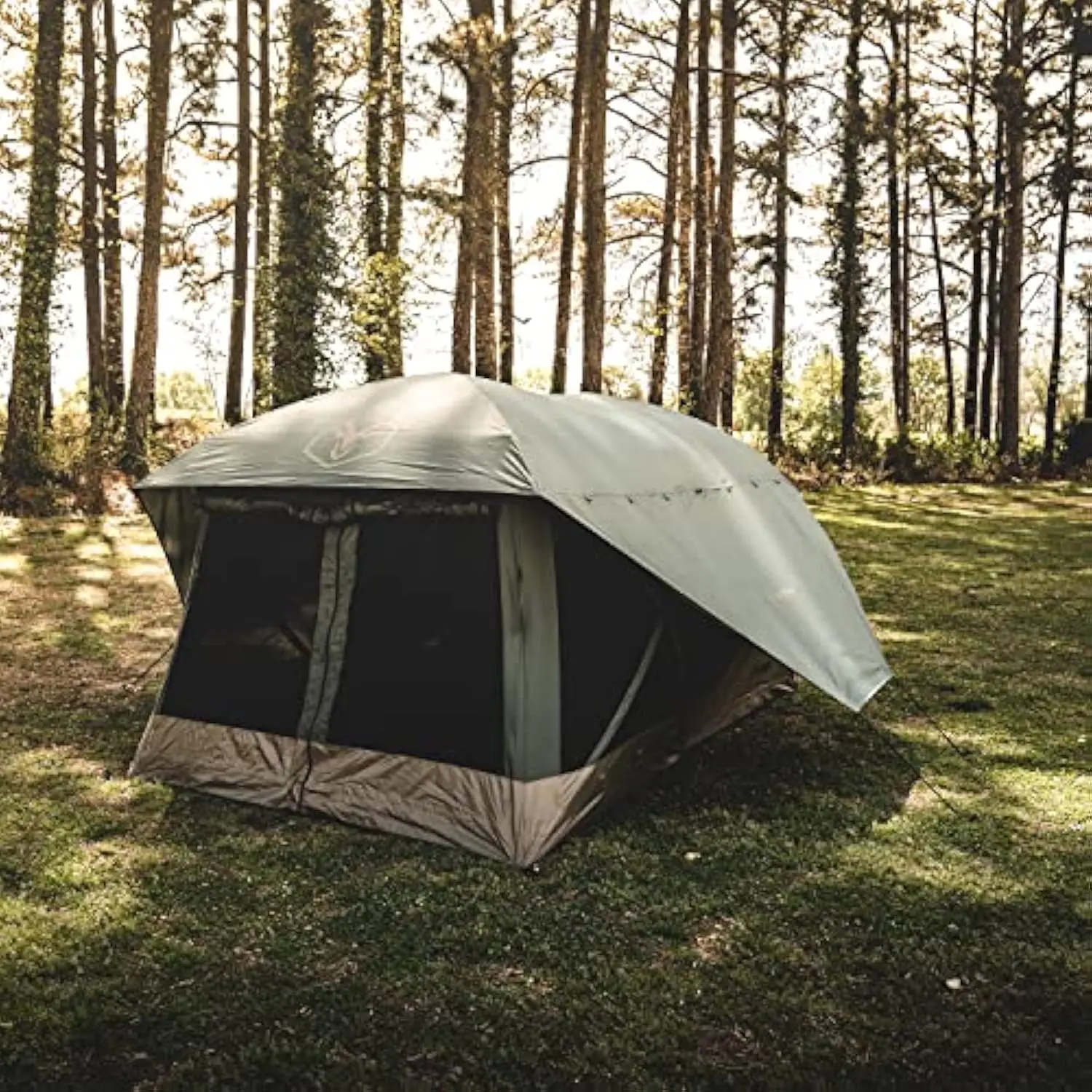
Best Lightweight Tent for Harsh Weather: Hilleberg Anjan 2
Key Specifications:
– Weight: 3 lbs 6 oz (1.5 kg) trail weight
– Floor Area: 28 sq ft (2.6 sq m)
– Peak Height: 39 inches (99 cm)
– Packed Size: 19 x 7 inches (48 x 18 cm)
– Doors/Vestibules: 1
Pros:
– Exceptional weather resistance
– Superior wind stability
– Tunnel design maximizes interior space
– Extended vestibule for gear storage
– Silicone-coated fabrics for durability
– Can handle light snow loads
– Four-season versatility
Cons:
– Heavier than ultralight options
– Premium price point
– Single entrance design
– Less ventilation in warm conditions
– More complex setup than dome designs
When the forecast calls for challenging conditions, the Hilleberg Anjan 2 delivers weather protection that lighter tents simply cannot match. While slightly heavier than ultralight options, this tunnel-style tent offers a level of storm worthiness that justifies every extra ounce.
During our testing in Wyoming’s Wind River Range, the Anjan 2 remained rock-solid in sustained 40+ mph winds that forced many other backpackers to relocate. The aerodynamic tunnel design, reinforced with 9mm DAC aluminum poles, slices through wind rather than fighting against it.
The 28 square feet of floor space feels generous thanks to the near-vertical sidewalls, while the extended vestibule provides ample space for gear storage and cooking during storm conditions. The silicone-coated fabrics offer exceptional tear strength and durability while maintaining reasonable weight. For adventurers who need reliable protection in unpredictable conditions, our selection of highly weather-resistant lightweight tents prioritizes storm worthiness without excessive weight.
Best Lightweight Tent for Tall Backpackers: Big Agnes Copper Spur HV UL1 Long
Key Specifications:
– Weight: 2 lbs 6 oz (1.1 kg) trail weight
– Floor Area: 23 sq ft (2.1 sq m)
– Peak Height: 43 inches (109 cm)
– Packed Size: 18 x 6 inches (46 x 15 cm)
– Doors/Vestibules: 1
Pros:
– Extended 90-inch floor length
– Above-average peak height
– Vertical sidewalls maximize interior space
– Large vestibule for gear storage
– Excellent ventilation system
– Two-way zipper for flexibility
– Freestanding design works on any surface
Cons:
– Weight penalty for extra length
– Higher price point
– Single door design
– Limited width compared to 2-person models
– Thinner floor material requires care
Tall backpackers know the frustration of finding a lightweight tent that doesn’t leave their feet pressed against the foot wall or their head touching the entrance. The Big Agnes Copper Spur HV UL1 Long solves this problem with its extended 90-inch floor length while keeping weight remarkably reasonable at just over 2 pounds.
During testing with our 6‘4” (193 cm) team member, this tent provided a comfortable 8 inches of extra space at both head and foot—a luxury rarely found in lightweight backpacking shelters. The 43-inch peak height further enhances comfort, allowing tall users to sit upright without hunching.
The near-vertical sidewall design maximizes the usable interior space, making the shelter feel substantially larger than its specifications suggest. While slightly heavier than standard-length ultralight options, the comfort benefits for taller backpackers are well worth the modest weight penalty. Selecting appropriate shelter size for different users becomes especially important when accommodating taller hikers.
Lightweight Backpacking Tent, Ultralight Backpacking Tent, Ultralight Bivy Tent
Ultralight Single Person Camping Tent with Aluminum Poles for 3-Season Backpacking Waterproof DesignPrice range: $94.88 through $326.82 Select options This product has multiple variants. The options may be chosen on the product pageLightweight Backpacking Tent, Ultralight Backpacking Tent, Waterproof Backpacking Tent
$391.05 Select options This product has multiple variants. The options may be chosen on the product pageCompact Backpacking Tent, Lightweight Backpacking Tent, Waterproof Camping Tent
$335.52 Select options This product has multiple variants. The options may be chosen on the product pageUltralight Backpacking Tent, Ultralight Dome Tent, Winter Camping Tent
Price range: $369.63 through $370.07 Select options This product has multiple variants. The options may be chosen on the product pageHeavy Duty 4 Season Tent, Ultralight Freestanding Tent, Winter Camping Tent
$3,722.66 Select options This product has multiple variants. The options may be chosen on the product pageBackpacking Tent with Vestibule, Freestanding Backpacking Tent, Lightweight Backpacking Tent
Price range: $446.89 through $447.22 Select options This product has multiple variants. The options may be chosen on the product page
Best Lightweight Tent for Couples/Two-Person Use: NEMO Dagger 2P
Key Specifications:
– Weight: 3 lbs (1.4 kg) trail weight
– Floor Area: 32 sq ft (3.0 sq m)
– Peak Height: 42 inches (107 cm)
– Packed Size: 19 x 7 inches (48 x 18 cm)
– Doors/Vestibules: 2
Pros:
– Generous floor dimensions (90 x 50 inches)
– Two large doors for easy entry/exit
– Symmetrical design with equal space for both sleepers
– Large vestibules for extensive gear storage
– Excellent headroom throughout
– Integrated privacy panels
– Can be split between two packs
Cons:
– Slightly heavier than minimalist options
– Premium price point
– More complex setup than simpler designs
– Requires proper staking for stability
– Footprint sold separately
Sharing a tent shouldn’t mean sacrificing comfort, and the NEMO Dagger 2P delivers a truly livable space for two adults without excessive weight penalties. With a 50-inch width—a full 2-4 inches wider than many “two-person” tents—this shelter provides genuine comfort for couples or partners.
During our couples testing in the Adirondacks, we found the symmetrical design particularly noteworthy, giving equal access to doors, vestibule space, and interior storage pockets for both occupants. The 42-inch peak height extends across much of the tent rather than just the center point, creating a shared living space where both people can sit up simultaneously.
When weight is distributed between two hikers, each person carries just 1.5 pounds—comparable to many solo shelters but with significantly more living space. The lightweight tents specifically designed for two people balance critical space considerations with reasonable pack weight for shared adventures.
Understanding Lightweight Tent Categories and Specifications
Navigating lightweight tent specifications requires understanding both industry categories and how manufacturers measure their products. Generally, tents fall into three weight classifications:
- Ultralight: Under 2 pounds (0.9 kg) for one-person; under 3 pounds (1.4 kg) for two-person
- Lightweight: 2-3 pounds (0.9-1.4 kg) for one-person; 3-4 pounds (1.4-1.8 kg) for two-person
- Standard: 3+ pounds (1.4+ kg) for one-person; 4+ pounds (1.8+ kg) for two-person
When evaluating specifications, be aware of these key measurements:
- Minimum Trail Weight: Typically includes only tent body, rainfly, and poles—the minimum needed for setup
- Packed Weight: Includes everything in the package (tent body, rainfly, poles, stakes, stuff sacks, repair kit)
- Floor Area: Measured in square feet/meters but doesn’t account for sloping walls that reduce usable space
- Peak Height: Only indicates maximum height at the tallest point; doesn’t reflect overall headroom
- Packed Size: Compressed volume when packed; can vary based on packing technique
Understanding what makes a tent truly lightweight for trekking involves looking beyond simple weight numbers to consider the complete picture of space, durability, and functionality relative to your specific needs.
Lightweight Tent Design Types and Their Advantages
Different tent designs offer varying balances of weight, stability, and convenience:
Freestanding Tents
– Complete structure without stakes
– Can be pitched anywhere (rock, platforms, sand)
– Easy to move and reposition after setup
– Typically use more poles, adding 4-8 oz (113-227 g)
– Examples: Big Agnes Copper Spur, MSR Hubba Hubba
Semi-Freestanding Tents
– Main structure stands independently
– Require some staking for full setup (usually at foot end)
– Good compromise between weight and convenience
– Save 2-6 oz (57-170 g) over comparable freestanding models
– Examples: Nemo Dragonfly, REI Quarter Dome
Non-Freestanding/Trekking Pole Tents
– Require stakes and trekking poles for structure
– Save significant weight (8-16 oz/227-454 g over freestanding)
– More complex setup with steeper learning curve
– Less adaptable to challenging ground conditions
– Examples: Tarptent ProTrail, Zpacks Plex Solo
Minimalist Shelters
– Tarps, bivy sacks, hammocks
– Ultra-lightweight but with significant comfort compromises
– Highly specialized for specific conditions
– Require advanced skills and experience
– Best for experienced ultralight enthusiasts
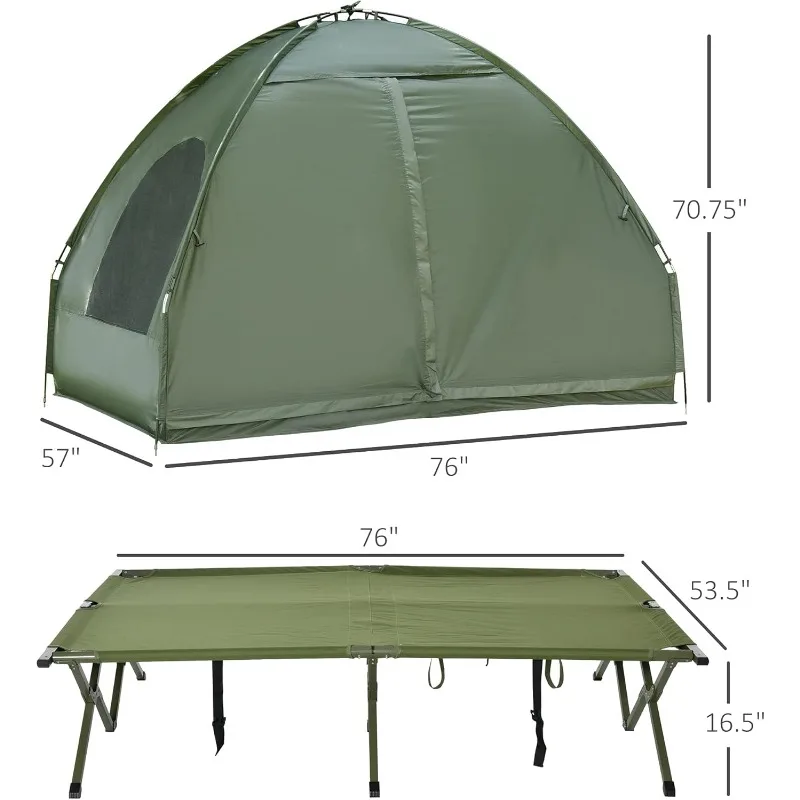
The question of whether a 2-person tent is actually big enough depends largely on the design type and specific dimensions, with non-freestanding models often offering less usable space than their freestanding counterparts with the same floor dimensions.
How We Tested and Rated These Tents
Our comprehensive testing methodology ensures real-world performance evaluation across multiple dimensions:
Field Testing Environments: Each tent was tested in at least three distinct environments (alpine, forest, desert, coastal) across multiple seasons.
Weather Challenges: Deliberate use during inclement weather including rain, wind, and temperature extremes to assess protection capabilities.
Measurement Verification: Independent verification of all manufacturer specifications including weights, dimensions, and packed size.
Standardized Setup Tests: Timed setup processes with both experienced and first-time users to assess learning curve and ease of use.
Durability Assessment: Minimum of 15 nights of use per tent with deliberate testing of high-stress components like zippers, pole connections, and tension points.
Our rating system weighted factors based on their importance to typical lightweight backpackers, with weight-to-space ratio and weather protection receiving highest priority, followed by setup simplicity, durability, and value considerations.
The materials that impact tent weight and performance represent critical factors in our testing methodology, as they directly influence the balance between weight reduction and long-term durability.
Lightweight Tent Materials: Understanding the Options
The dramatic weight differences between tent models largely come down to material choices:
Fabric Options:
– Dyneema Composite Fabric (DCF): Incredibly lightweight, waterproof without treatment, zero stretch when wet, exceptional strength-to-weight ratio, but expensive and less abrasion-resistant
– Silnylon: Nylon impregnated with silicone, good balance of weight and cost, stretches when wet requiring readjustment
– Silpoly: Polyester with silicone treatment, lighter than silnylon, minimal stretching when wet, less tear strength than nylon
Pole Materials:
– Aluminum: Standard DAC poles offer good strength-to-weight ratio at reasonable cost
– Carbon Fiber: 25-30% weight reduction over aluminum but more brittle and significantly more expensive
– Composite: Combining materials for balanced performance, moderate weight savings
Weatherproofing Treatments:
– PU Coating: Traditional polyurethane waterproofing, effective but adds weight
– Silicone Impregnation: Lighter and more durable than PU coating
– DWR Treatments: Adds water resistance to normally absorbent materials
Material choices directly affect how compact a tent can pack, with premium ultralight materials generally offering the smallest packed volume but at significantly higher cost.
Common Concerns: How Durable Are Lightweight Tents?
Many backpackers worry that “lightweight” automatically means “fragile.” While ultralight tents do require more care than heavier options, modern materials and designs have dramatically improved durability:
Floor Durability
– 15-20 denier floors require careful site selection and footprint use
– 30+ denier floors can handle moderate abuse but add weight
– Groundsheets extend life significantly with minimal weight penalty
Rainfly Longevity
– 10-15 denier silnylon/silpoly flies typically last 3-5 seasons with proper care
– UV exposure causes more damage than rain or wind
– Proper storage extends life significantly
Preventing Common Failures
– Most tent failures occur from improper setup causing stress on poles or fabric
– Careful site selection avoids punctures and abrasion
– Proper tensioning prevents excessive stress during storms
Practical Tips
– Always carry repair tape (Tenacious Tape or similar)
– Use groundsheet on rough surfaces
– Clean and completely dry before storage
– Store loosely, not compressed
Understanding different shelter options with durability considerations helps match your selection to your personal risk tolerance and care level.
Making the Right Choice: Matching Your Tent to Your Needs
Selecting the optimal lightweight tent requires honest assessment of your priorities and usage patterns:
For Weekend Backpackers (1-3 nights):
– Prioritize comfort and easy setup
– Freestanding designs offer convenience
– Can accept slightly higher weight for better features
– Durability may outweigh absolute weight savings
For Thru-Hikers (weeks/months):
– Weight becomes paramount
– Non-freestanding designs worth the setup learning curve
– Premium materials justify higher cost over long distances
– Repair knowledge and parts essential
For All-Season Users:
– Look for adaptable ventilation systems
– Consider semi-freestanding or freestanding for snow loads
– Higher denier materials worth the weight penalty
– Extra guy points for stability in wind
For Budget-Conscious Buyers:
– Focus on “lightweight” rather than “ultralight”
– Consider previous-generation models with minimal changes
– Prioritize floor durability to avoid replacement costs
– Look for included footprints/accessories
The guide to selecting the right lightweight shelter provides deeper insights into matching specific features to your individual needs and preferences.
Frequently Asked Questions About Lightweight Tents
How much should a lightweight tent weigh?
For most backpackers, a target of 2.5-3.5 pounds (1.1-1.6 kg) for a two-person tent and 1.5-2.5 pounds (0.7-1.1 kg) for a one-person tent offers the best balance of weight savings and durability.
Are ultralight tents warm enough?
Most lightweight tents are 3-season designs with adequate warmth for temperatures above freezing. For colder conditions, consider a 4-season tent or supplementing with a liner.
Do I need a footprint?
For tents with floors under 30 denier, a footprint is highly recommended. For 30+ denier floors, footprints are optional but extend tent life.
How do I prevent condensation?
Proper ventilation is key—use all vents, leave vestibule doors partially open when possible, and avoid camping near water sources when conditions favor condensation.
Are trekking pole tents difficult to set up?
They require more practice initially but become quick once learned. Most users master setup within 3-5 attempts.
How much should I expect to spend?
Quality lightweight tents generally range from $250-400 for budget-friendly options to $500-700 for premium ultralight models. Specialized trekking pole tents with detailed specifications often represent the highest end of this price range.
Maintaining Your Lightweight Tent for Maximum Lifespan
Proper maintenance dramatically extends the life of lightweight shelters:
Cleaning:
– Shake out debris after each use
– Spot clean with mild soap and water when needed
– Never machine wash or dry clean
– Avoid harsh detergents that can damage waterproofing
Drying & Storage:
– Always dry completely before storage (even if it means setting up at home)
– Store loosely in storage sack or pillowcase, not compressed
– Keep in cool, dry place away from direct sunlight
– Hang when possible rather than fold
Field Repairs:
– Carry repair tape for tears and holes
– Bring extra cord for guy lines
– Pack spare stakes or know how to improvise them
– Pole repair sleeves for emergency splints
Waterproofing Maintenance:
– Reapply DWR to fly when water stops beading
– Seam sealer for any leaking seams
– Follow manufacturer recommendations for specific fabrics
Ultralight tents requiring special maintenance often use specialized materials that need specific care procedures, so always consult the manufacturer’s guidelines.
Embracing Minimalism: The Freedom of Going Lighter
The benefits of lightweight backpacking extend far beyond simple numbers on a scale. Carrying less weight transforms the entire hiking experience in profound ways:
Physically, a lighter pack reduces strain on joints and muscles, decreases fatigue, and extends comfortable hiking distance. Many backpackers report being able to hike 20-30% farther with the same effort after reducing pack weight.
Mentally, lightweight hiking shifts focus from enduring the journey to enjoying it. When each step requires less effort, you can more fully appreciate your surroundings, take spontaneous side trips, and end each day with energy to spare.
As one veteran thru-hiker told us, “The difference between my first backpacking trip with a 45-pound pack and now with an 18-pound base weight isn’t just physical—it completely changed how I experience the wilderness.”
Your tent represents one of the most significant weight-saving opportunities in your entire kit. Making an informed choice here creates a foundation for the lightweight philosophy that can transform your relationship with the outdoors.

